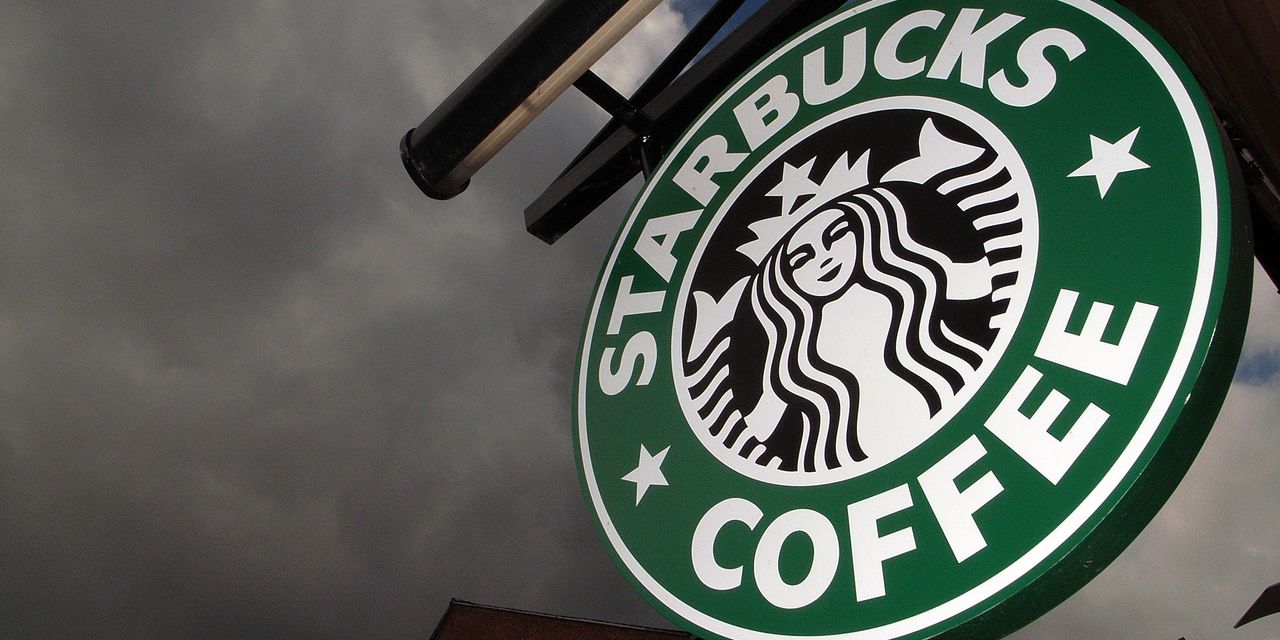Ahead of Starbucks Corp.’s third-quarter results on Tuesday, Wall Street was worried about a slowdown in U.S. sales trends. During the coffee chain’s earnings call, executives spent a lot of time insisting they still had plenty of levers to pull to ensure there wouldn’t be one.
Among them: Cold coffee drinks, which made up 75% of U.S. beverage sales during the quarter; more customizable beverages, which made up more than 60% of drink orders during the quarter; more frequent food orders with drinks, with two out of every five customers tacking on food to their order; new stores in smaller cities and new formats in larger ones, with more digital menu boards to “sharpen personalization” in the years ahead; its loyalty program, which has kept customers returning more frequently; new equipment, like handheld cold-foam blenders; and new drinks, like cold-pressed cold brew, which is being tested and set for rollout across U.S. company-owned stores by the end of the next fiscal year.
Laxman Narasimhan, Starbucks’
SBUX,
new chief executive, also said baristas were staying at their jobs for longer and productivity was improving, helping profitability.
After the coffee chain poured a lot of money into employee wages and benefits — efforts Starbucks’ unionized employees have said wouldn’t have happened without their demands for better pay and protections — Narasimhan said items sold per hour had improved. And he said barista take-home pay had increased by 20% year over year, with more improvements on the way.
“Through scheduling and staffing improvements, we are beginning to increase the number of hours per partner in-store, critical to running great stores and improving partner engagement while also improving productivity,” he said.
Still, third-quarter same-store sales in North America disappointed investors. They rose 7%, while Consensus Metrix had forecast an 8.2% gain. The company also narrowed its per-share profit range for the fiscal year, but it held to its full-year global same-store sales landing toward the high end of a forecast for a 7% to 9% gain.
Shares were up 2.5% on Wednesday, after slipping after hours initially on Tuesday following the results.
Analysts still found things to like after the results. Higher productivity and higher prices helped boost margins during the quarter. And same-store sales made a big rebound in China.
Starbucks executives last year said they still had room to keep prices high and room to coast on cold, customizable beverages and younger consumers. But even then, analysts wondered whether the company’s financial targets — including for same-store sales — were too ambitious. And after Tuesday’s results, analysts weren’t exactly convinced by the company’s forecasts.
BofA analysts, in a note on Tuesday, said the “key controversy” from Starbucks’ results was the sustainability of North America’s same-store sales trends. CFRA analyst Siye Desta cited “the risk of subdued revenue and margin growth.”
BTIG analyst Peter Saleh, in a research note on Wednesday, echoed those sentiments.
“Pricing is moderating and traffic is more difficult to come by, leading investors to increasingly doubt the 7-9% long-term comp guidance,” he said. “We expect management to provide more details around their long-term algorithm in November, and believe unit development could accelerate modestly, placing less pressure on comps to achieve the top-line growth targets.”
He also suggested that a bit more pessimism from the company could help.
“As strange as it may sound, we believe a lowering of the same-store sales bar could attract more investors to the stock, as many believe the current hurdle is just too high,” he said.
Read the full article here




